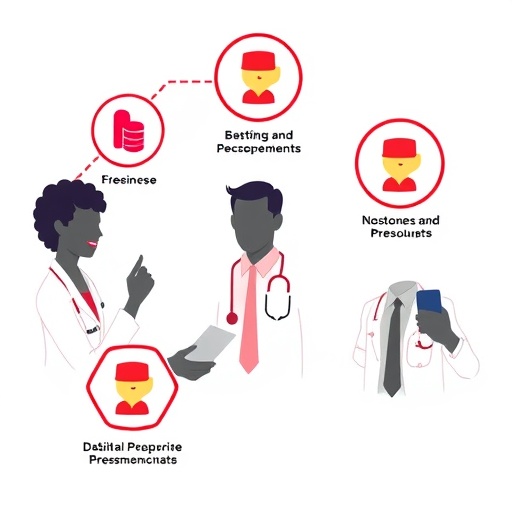1. Canagliflozin not associated with increased risk for fracture
Abstract: http://annals.
Editorial: http://annals.
URLs go live when the embargo lifts
Compared with a glucagon-line peptide-1 (GLP-1) agonist, canagliflozin was not associated with an increased risk for fracture in patients with type 2 diabetes at relatively low risk for fracture. Findings from a multidatabase cohort study are published in Annals of Internal Medicine.
Sodium-glucose cotransporter-2 (SGLT2) inhibitors promote glycosuria, resulting in possible effects on calcium, phosphate, and vitamin D homeostasis. Some studies suggest that canagliflozin, an SGLT2 inhibitor, is associated with decreased bone mineral density and a potential increased risk for fracture, which is important because people with type 2 diabetes are already at higher risk. These conflicting study results raise challenges in counseling patients prescribed canagliflozin about the risk for fracture.
Researchers from Brigham and Women’s Hospital reviewed two U.S. commercial health care databases providing data on more than 70 million patients from March 2013 to October 2015 to estimate risk for nonvertebral fracture among new users of canagliflozin. Dr Mike Fralick, the study’s lead author, indicated that the overall rate of fracture was similarly low among patients with type 2 diabetes who were treated with canagliflozin or a GLP-1 agonist. Findings were robust across multiple sensitivity and subgroup analyses and the study population is representative of a meaningful proportion of commercially insured patients with diabetes in the U.S. population.
According to the researchers, these results should be reassuring to patients and physicians who are considering the potential risks and benefits of canagliflozin. An accompanying editorial from the University of Manitoba supports this conclusion and stresses the importance of these real-world findings. However, the editorialists write that caution may still be appropriate when using canagliflozin in older patients who have high fracture risk, with particular attention given to hydration status and fall risk.
Media contact: For an embargoed PDF, please contact Lauren Evans at [email protected]. To interview the lead author, Michael Fralick, MD, SM, please contact Mark Murphy at [email protected].
2. Alirocumab not cost-effective for lowering LDL cholesterol
Substantial price reductions occurred following the presentation of these cost-effectiveness results in March 2018, suggesting the importance of just-in-time analyses to inform payers, providers, patients, and policy makers about cost-effective prices of new therapeutics
Abstract: http://annals.
Editorial: http://annals.
URLs go live when the embargo lifts
Despite substantial cardiovascular benefits, the price of alirocumab would need to be reduced by 86 percent to be considered cost-effective for treating LDL cholesterol. Results from a just-in-time analysis initially presented in March 2018 to coincide with the release of the ODYSSEY Outcomes Trial results and are now published in Annals of Internal Medicine.
The ODYSSEY Outcomes (Evaluation of Cardiovascular Outcomes After an Acute Coronary Syndrome During Treatment With Alirocumab) trial included participants with a recent acute coronary syndrome. Compared with participants receiving statins alone, those receiving a statin plus alirocumab had lower rates of myocardial infarction, stroke and death. While the medication is considered very expensive at a cost of $14,000 per year (about 100 times the cost of a generic statin), many hoped it would be cost-effective given the potential for savings on costs associated with coronary heart disease and stroke, such as hospitalizations, revascularization procedures, and other medical costs.
Researchers from the University of California, San Francisco used a computer model specifically designed to determine cost-effectiveness to assess alirocumab in these circumstances. They specifically compared the cost-effectiveness ratio of alirocumab or ezetimibe added to statin therapy. Their model showed that compared with a statin alone, the addition of ezetimibe cost $81,000 per quality-adjusted life year (QALY), while the addition of alirocumab cost $308,000 per QALY. Based on its current price, the cost of alirocumab would have to be reduced from $14,560 annually to $874, which would be unprecedented for biologic therapies in the U.S. market.
The results of this cost effectiveness analysis were announced in March 2018 and timed to coincide with the release of the ODYSSEY results. Immediately following this release, the maker of alirocumab announced a plan to effectively lower the price and several subsequent announcements have also resulted in substantial lowering of the price of this class of medications.
The authors suggest that early just-in-time cost effectiveness analyses are critical for payers, providers, patients, and policy-makers to have the tools to negotiate for cost-effective prices for new therapeutics.
Media contact: For an embargoed PDF, please contact Lauren Evans at [email protected]. To interview the lead author, Kirsten Bibbins-Domingo, PhD, MD, MAS, please contact her directly at [email protected].
3. Assessing CHA2DS2-VASc scores annually in patients with AF could improve risk predictions, inform anticoagulant prescribing
Abstract: http://annals.
URLs go live when the embargo lifts
Assessing CHA2DS2-VASc scores annually in patients with atrial fibrillation could improve stroke risk predictions and inform oral anticoagulant prescribing. Findings from a brief research report are published in Annals of Internal Medicine.
International guidelines suggest that oral anticoagulants can be omitted for patients with atrial fibrillation (AF) without a CHA2DS2-VASc score greater than 0 in men or 1 in women. While it is recommended that risk is periodically re-assessed, a reasonable interval for re-evaluation has not been studied. This is important because stroke risk is not static among patients with atrial fibrillation, and about 90 percent develop at least one new risk factor before presentation with ischemic stroke, which means they would no longer be accurately described as “low-risk.”
Researchers from Taipei Veterans General Hospital and National Yang-Ming University used a national database to identify 14,606 patients with newly diagnosed atrial fibrillation who were not prescribed an anticoagulant based on their CHA2DS2-VASc score. The researchers found that about 16.1 percent of men and 16.2 percent of women who were initially at low risk had a high-risk CHA2DS2-VASc score 1 year after incident atrial fibrillation. This finding suggests that CHA2DS2-VASc scores should be reassessed at least annually in patients with atrial fibrillation so that oral anticoagulants can be prescribed in a timely manner for stroke prevention.
Media Contact: For an embargoed PDF or author contact information, please contact Lauren Evans at [email protected]. To reach the lead author, Shih-Ann Chen, MD, please contact him directly at [email protected].
###
Media Contact
Angela Collom
[email protected]
215-351-2653




